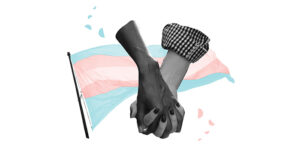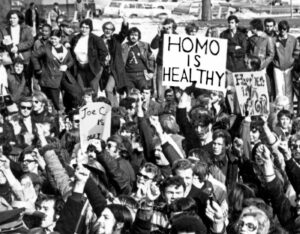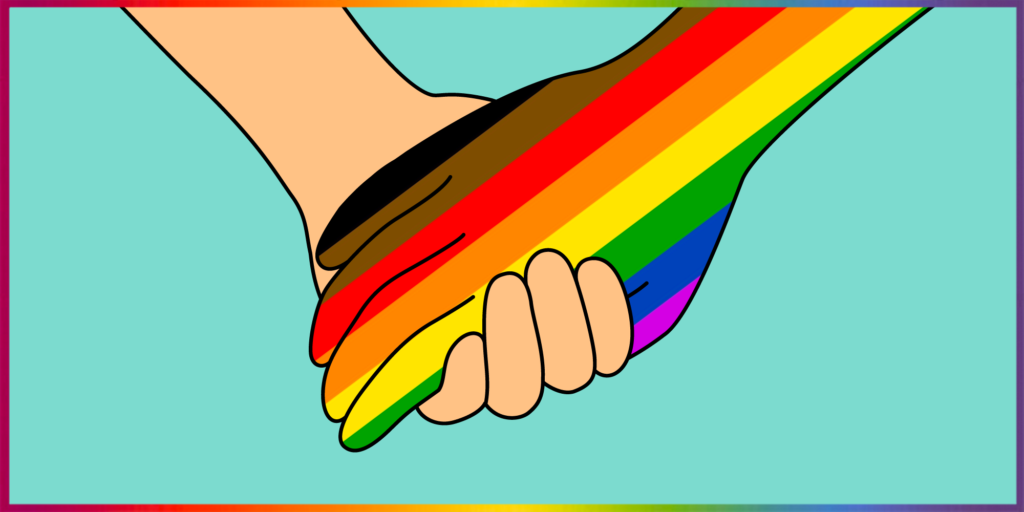Supporting the LGBTQ+ community is crucial for fostering inclusivity, equality, and acceptance in society. It is important to recognize and understand the diverse identities and experiences within the LGBTQ+ community. This article aims to provide insights into various ways individuals can support the LGBTQ+ community and contribute to creating a more inclusive and accepting world.
Contents
- 1 Understanding the LGBTQ+ Community
- 2 How To Provide Support for LGBTQ Community?
- 2.1 Advocacy and Education
- 2.2 Creating Safe Spaces
- 2.3 Promoting Equality and Acceptance
- 2.4 Supporting LGBTQ+ Youth
- 2.5 Mental Health and Well-being
- 2.6 Fighting Discrimination and Hate Crimes
- 2.7 Providing Resources and Support
- 2.8 Building Allies and Solidarity
- 2.9 Workplace Inclusivity
- 2.10 Supporting LGBTQ+ Families
- 2.11 Engaging in Legislative Advocacy
- 2.12 Intersectionality and LGBTQ+ Rights
- 3 Conclusion
Understanding the LGBTQ+ Community

Understanding the LGBTQ+ community involves recognizing and respecting the diverse range of sexual orientations, gender identities, and gender expressions that exist beyond the traditional heteronormative norms. The acronym LGBTQ+ stands for:
- L – Lesbian: Women who are emotionally, romantically, or sexually attracted to other women.
- G – Gay: Men who are emotionally, romantically, or sexually attracted to other men. The term is also used as an umbrella term for the entire community.
- B – Bisexual: Individuals who are emotionally, romantically, or sexually attracted to people of both their gender and other genders.
- T – Transgender: People whose gender identity differs from the sex they were assigned at birth. For example, someone who was assigned male at birth but identifies as female or vice versa.
- Q – Queer: An umbrella term that encompasses a diverse range of non-heterosexual and non-cisgender identities.
Some individuals prefer to use this term to indicate their non-normative sexual orientation or gender identity.
How To Provide Support for LGBTQ Community?

Providing support for the LGBTQ+ community involves being an ally and actively promoting inclusivity, understanding, and equality. Here are some ways you can offer support:
Advocacy and Education
Advocacy involves actively supporting and speaking out on behalf of a cause, group, or community to bring about positive change and address issues of inequality and injustice. In the context of the LGBTQ+ community, advocacy seeks to promote equal rights, fight discrimination, and create a more inclusive society.
Education is a powerful tool for challenging stereotypes, reducing prejudice, and fostering empathy and understanding. Proper education about the LGBTQ+ community can help dispel myths and misconceptions. Here’s how you can contribute to LGBTQ+ education:
- Promote Inclusive Curricula: Advocate for inclusive and comprehensive sex education in schools that covers LGBTQ+ topics, identities, and experiences.
- Organize Workshops and Seminars: Host workshops and seminars in schools, workplaces, or community centers to educate others about LGBTQ+ issues and the importance of inclusivity.
- Share Personal Stories: If you are a member of the LGBTQ+ community or an ally, sharing personal stories can help others relate to the struggles and experiences faced by LGBTQ+ individuals.
Creating Safe Spaces
Creating safe spaces is a crucial step in fostering inclusivity and supporting marginalized communities, including the LGBTQ+ community. Safe spaces are environments where individuals can feel comfortable, accepted, and respected without fear of discrimination or harm. Here are some steps to help create safe spaces for LGBTQ+ individuals:
- Education and Awareness: Ensure that all members of the community, whether staff, students, colleagues, or participants, are educated about LGBTQ+ issues and terminology. This will help prevent unintentional ignorance or insensitivity.
- Inclusive Policies and Practices: Implement inclusive policies that protect LGBTQ+ rights and provide clear guidelines on respecting gender identity and sexual orientation. Ensure these policies are visible and accessible to all.
- Respect Pronouns and Names: Always use individuals’ chosen names and preferred pronouns. Respect and validate each person’s gender identity, regardless of whether they are cisgender or transgender.
Promoting Equality and Acceptance
Promoting equality and acceptance for the LGBTQ+ community is essential for creating a more inclusive and just society. Here are some ways you can actively work towards promoting equality and acceptance:
- Challenge Prejudice and Discrimination: Speak up against homophobia, transphobia, and any other form of discrimination you encounter. Be an ally and advocate for the rights of LGBTQ+ individuals.
- Educate Yourself and Others: Learn about LGBTQ+ issues, history, and the challenges faced by the community. Educate others around you about the importance of equality and acceptance.
- Use Inclusive Language: Be mindful of the language you use. Respect individuals’ gender identities and use their chosen names and pronouns. Use gender-neutral language when appropriate.
Supporting LGBTQ+ Youth
Supporting LGBTQ+ families is essential for fostering inclusivity, acceptance, and well-being for all family members. Here are some ways to offer support to LGBTQ+ families:
- Education and Awareness: Promote awareness and understanding of LGBTQ+ families within the community. Educate others about the various forms of families, including those with same-sex parents or transgender parents.
- Advocate for Legal Rights: Support legislation and policies that protect the rights of LGBTQ+ parents, such as adoption rights, second-parent adoption, and parental recognition.
- Use Inclusive Language: Use inclusive language when discussing families to acknowledge and respect diverse family structures.
Mental Health and Well-being
Mental health and well-being are essential aspects of overall health and quality of life. For the LGBTQ+ community, mental health can be particularly impacted due to the unique challenges and discrimination they may face. Here are some considerations for promoting mental health and well-being within the LGBTQ+ community:
- Reduce Stigma: Work to reduce the stigma surrounding mental health issues in society and within the LGBTQ+ community. Encourage open conversations and seek help when needed.
- Cultivate Supportive Environments: Create supportive and inclusive spaces where LGBTQ+ individuals feel safe and accepted. This can be within families, communities, workplaces, or educational institutions.
- Access to Mental Health Services: Advocate for improved access to mental health services that are sensitive to the needs of LGBTQ+ individuals. This includes LGBTQ+ affirmative therapy and counseling.
Fighting Discrimination and Hate Crimes

Discrimination and hate crimes continue to pose significant challenges to the LGBTQ+ community. Supporting LGBTQ+ individuals involves actively standing against discrimination and hate crimes, reporting incidents, and supporting organizations that fight for their rights. By raising awareness and fostering understanding, we can work towards eliminating these injustices.
Providing Resources and Support
Numerous resources and support systems are available to the LGBTQ+ community. It is essential to be aware of these resources and share them with those in need. LGBTQ+ helplines, support groups, and online platforms provide valuable support and guidance. By connecting individuals with these resources, we can make a positive difference in their lives.
Building Allies and Solidarity
Becoming an ally is crucial for supporting the LGBTQ+ community. Allies are individuals who actively work to understand LGBTQ+ experiences, challenge heteronormativity, and stand up against discrimination. By listening, learning, and amplifying LGBTQ+ voices, allies contribute to creating an inclusive and supportive environment.
Workplace Inclusivity
Workplace inclusivity refers to creating a work environment where all employees feel welcome, respected, and valued regardless of their background, identity, or characteristics. Promoting workplace inclusivity is crucial for the well-being of employees and the overall success of an organization. When it comes to LGBTQ+ inclusivity, here are some key steps to foster a more inclusive workplace:
- Non-Discrimination Policies: Establish clear and comprehensive non-discrimination policies that explicitly include sexual orientation and gender identity as protected categories.
- Inclusive Benefits and Policies: Ensure that employee benefits, such as health insurance, parental leave, and other policies, are inclusive of all families, regardless of sexual orientation or gender identity.
- Training and Education: Provide diversity and inclusion training for all employees to increase awareness of LGBTQ+ issues, promote understanding, and address unconscious biases.
Supporting LGBTQ+ Families
LGBTQ+ families often face unique challenges, including legal barriers and societal stigma. Supporting LGBTQ+ families involves advocating for legal rights, providing emotional support, and challenging stereotypes. By creating a more inclusive and accepting society, we can help LGBTQ+ families thrive.
Engaging in Legislative Advocacy
Legislative advocacy plays a vital role in securing rights and protections for the LGBTQ+ community. Supporting LGBTQ+ organizations that engage in legislative advocacy helps drive positive change. By staying informed about proposed legislation and actively participating in advocacy efforts, individuals can contribute to advancing LGBTQ+ rights.
Intersectionality and LGBTQ+ Rights

Intersectionality is a concept that recognizes and acknowledges the interconnected nature of various social identities and experiences, such as race, gender, class, sexual orientation, disability, and more. It highlights that individuals’ experiences and challenges cannot be understood in isolation but are shaped by the intersection of multiple identities and systems of oppression.
When it comes to LGBTQ+ rights, intersectionality plays a crucial role in understanding the diverse experiences of individuals within the community. LGBTQ+ individuals can belong to different racial, ethnic, socioeconomic, religious, and cultural backgrounds, which may intersect to create unique challenges and discrimination. Here are some key points about the intersectionality of LGBTQ+ rights:
- Diverse Experiences: The experiences of LGBTQ+ individuals are not uniform. Different intersections of identities influence how discrimination, stigma, and prejudice are experienced within the LGBTQ+ community.
- Disparities and Inequities: Intersectionality can compound the impact of discrimination and lead to disparities in access to resources, healthcare, education, and employment opportunities within the LGBTQ+ community.
- Visibility and Representation: The visibility and representation of LGBTQ+ individuals from diverse backgrounds are essential to address the unique challenges they face. This includes representation in media, leadership roles, and advocacy spaces.
Conclusion
Supporting the LGBTQ+ community is an ongoing commitment toward inclusivity, equality, and acceptance. By understanding diverse identities, advocating for LGBTQ+ rights, creating safe spaces, and promoting equality, individuals can contribute to a more inclusive society. It is essential to provide support, resources, and solidarity to LGBTQ+ individuals, fostering a world where everyone can live authentically and without fear of discrimination.
Life may sometimes be challenging for people from the LGBTQ community, but Online LGBTQ Counseling can help. Get experienced LGBTQ therapists at PrideMantra: Book a trial LGBTQ therapy session.


